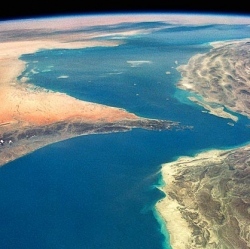
Shoebox-sized CubeSats may soon be visiting the Moon and Mars, but their main focus is still studying Earth. Before the launch of SLS in 2018, which will see dozens of CubeSats hitching a ride, NASA has outlined six new small satellite missions to be launched over the next few months that are equipped with new methods of studying the Earth’s atmosphere, climate and weather.
Four of the new CubeSats, named RAVAN, IceCube, HARP and MiRaTA, will be launched as individual satellites, while the remaining two missions, dubbed CYGNSS and TROPICS, will be made up of constellations of CubeSats working in unison.
First off the block will be the Radiometer Assessment using Vertically Aligned Nanotubes (RAVAN), which is set to launch later in November. RAVAN will be tasked with detecting small changes in the Earth’s energy budget, the amount of energy our atmosphere loses to space, in order to improve our understanding of how greenhouse gases can influence the planet’s climate.
Early next year, the Microwave Radiometer Technology Acceleration (MiRaTA) CubeSat will launch to study temperature, water vapor and cloud ice, which is all useful data for predicting the weather and tracking storms. In spring (Northern hemisphere), two more weather-focused small satellites will launch: IceCube, which measures cloud ice thanks to a new miniaturized high-frequency microwave radiometer, and the Hyper Angular Rainbow Polarimeter (HARP), which looks at airborne particles and the distribution of different-sized cloud droplets.
Before then, NASA is planning to kick off the first of its constellation arrangements with the Cyclone, Global Navigation Satellite System (CYGNSS). Launching December 12, the CYGNSS system will be composed of eight satellites flying together to study tropical cyclones by way of measuring wind intensity over the ocean.
A new method is employed to take those measurements, where the satellites track reflected GPS signals as they bounce off the water’s surface, to study how the air and sea interact during cyclones, hurricanes and typhoons.
